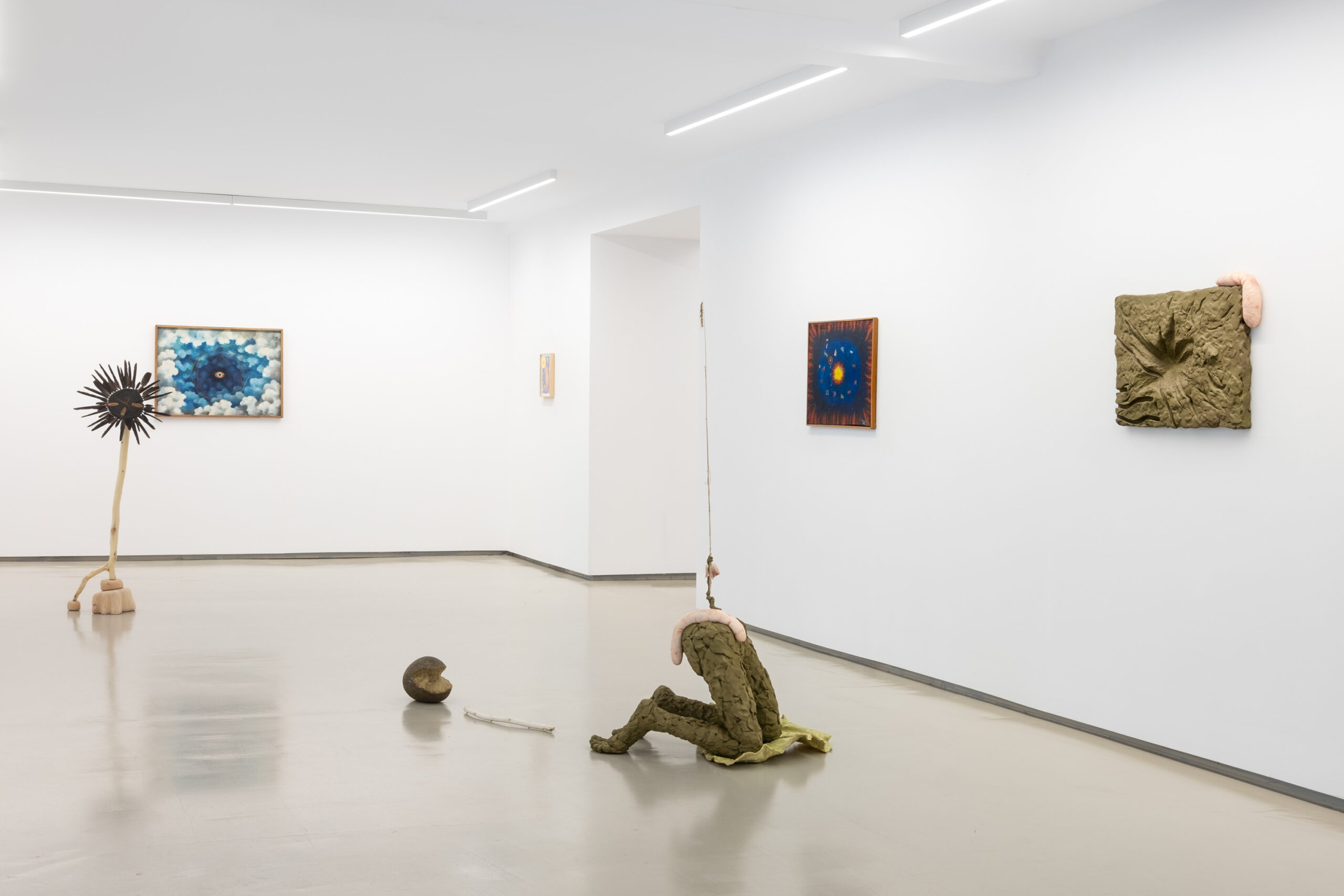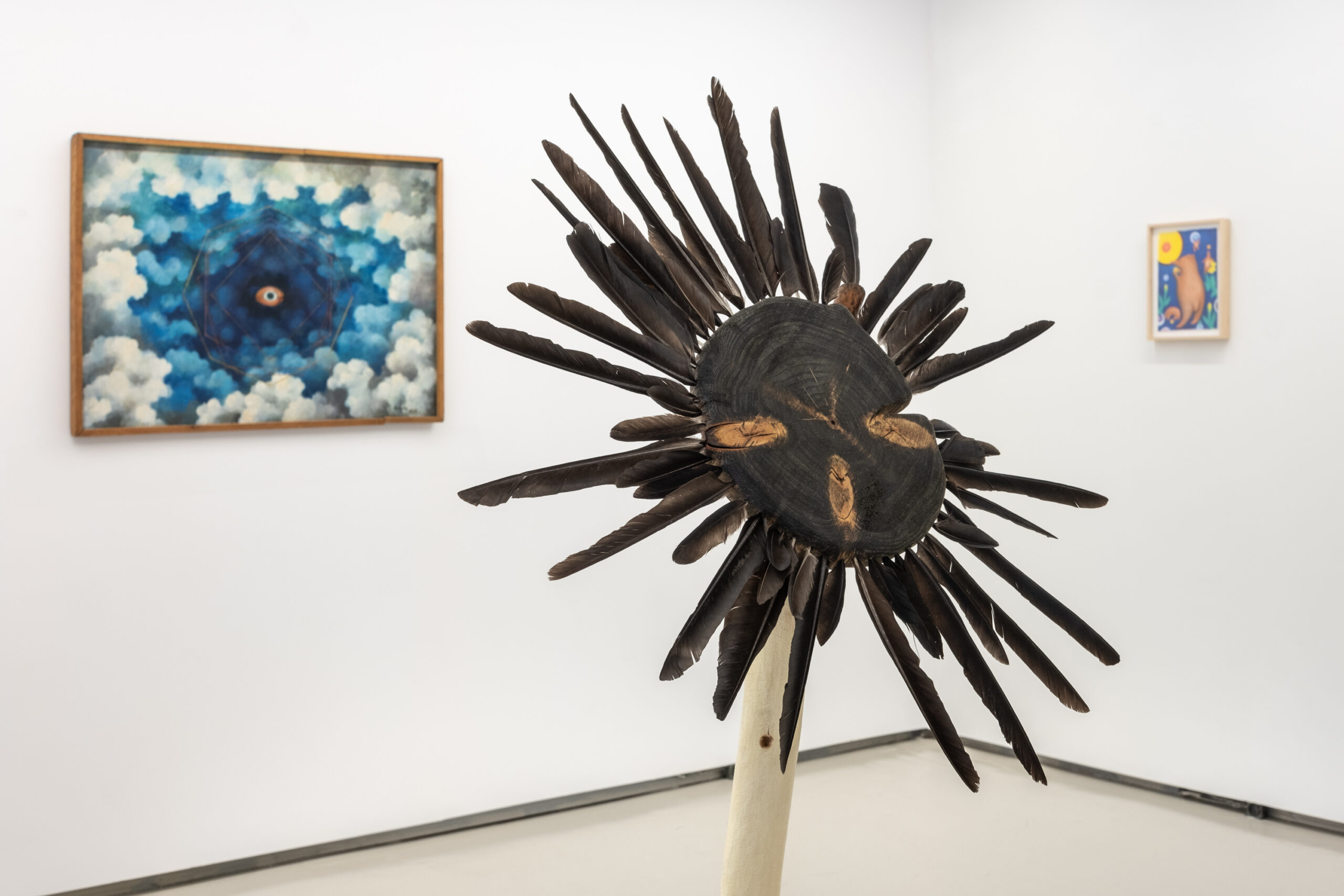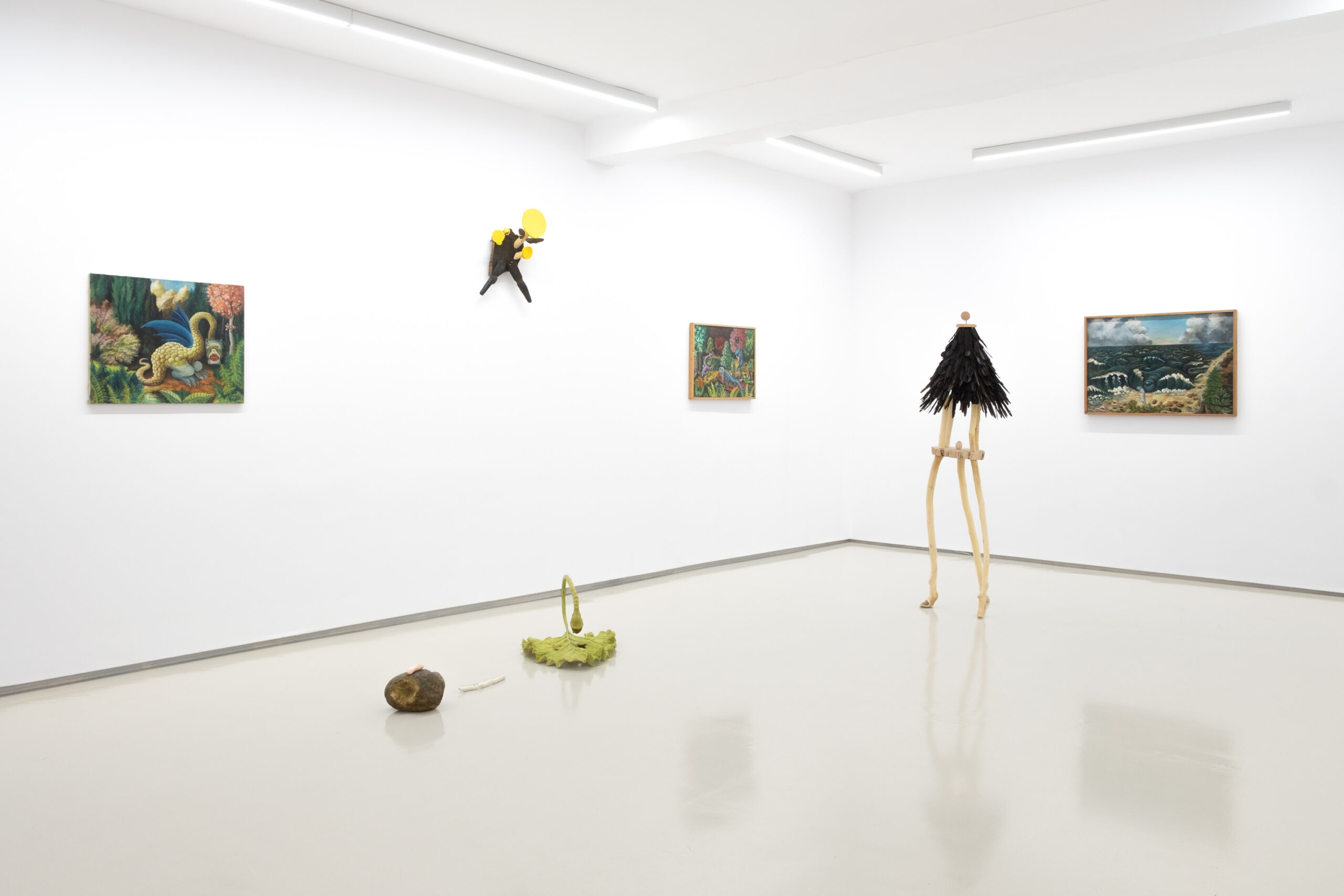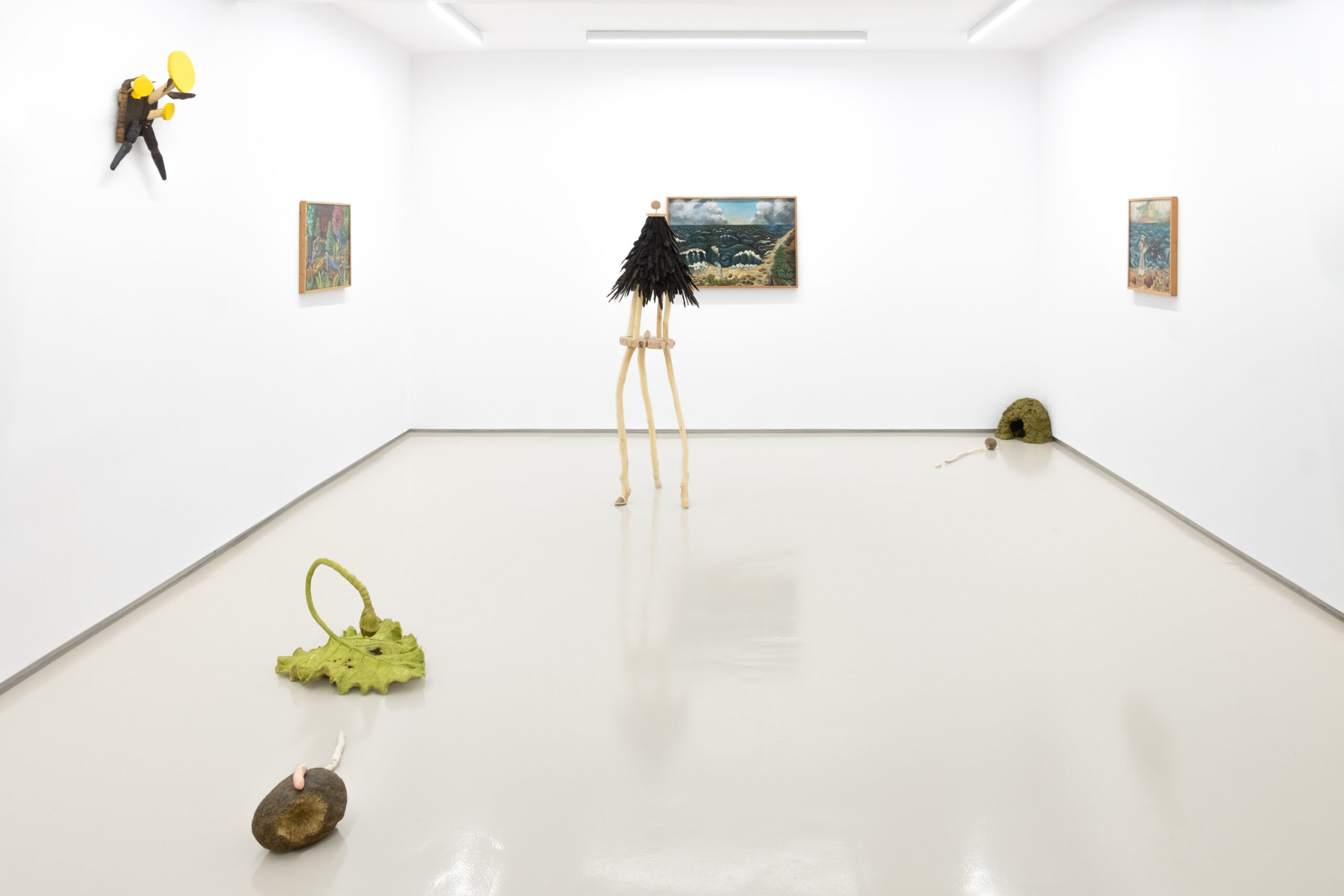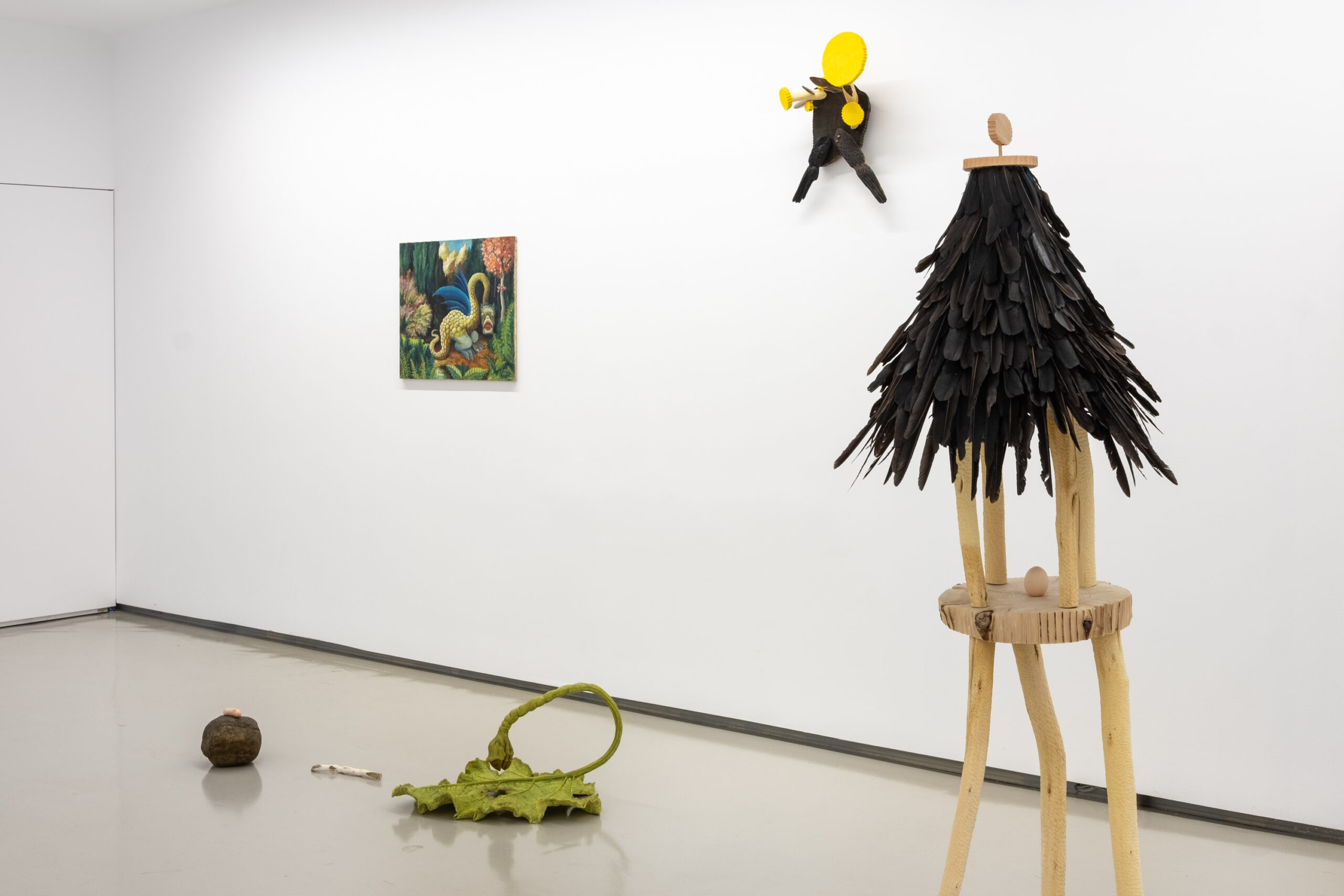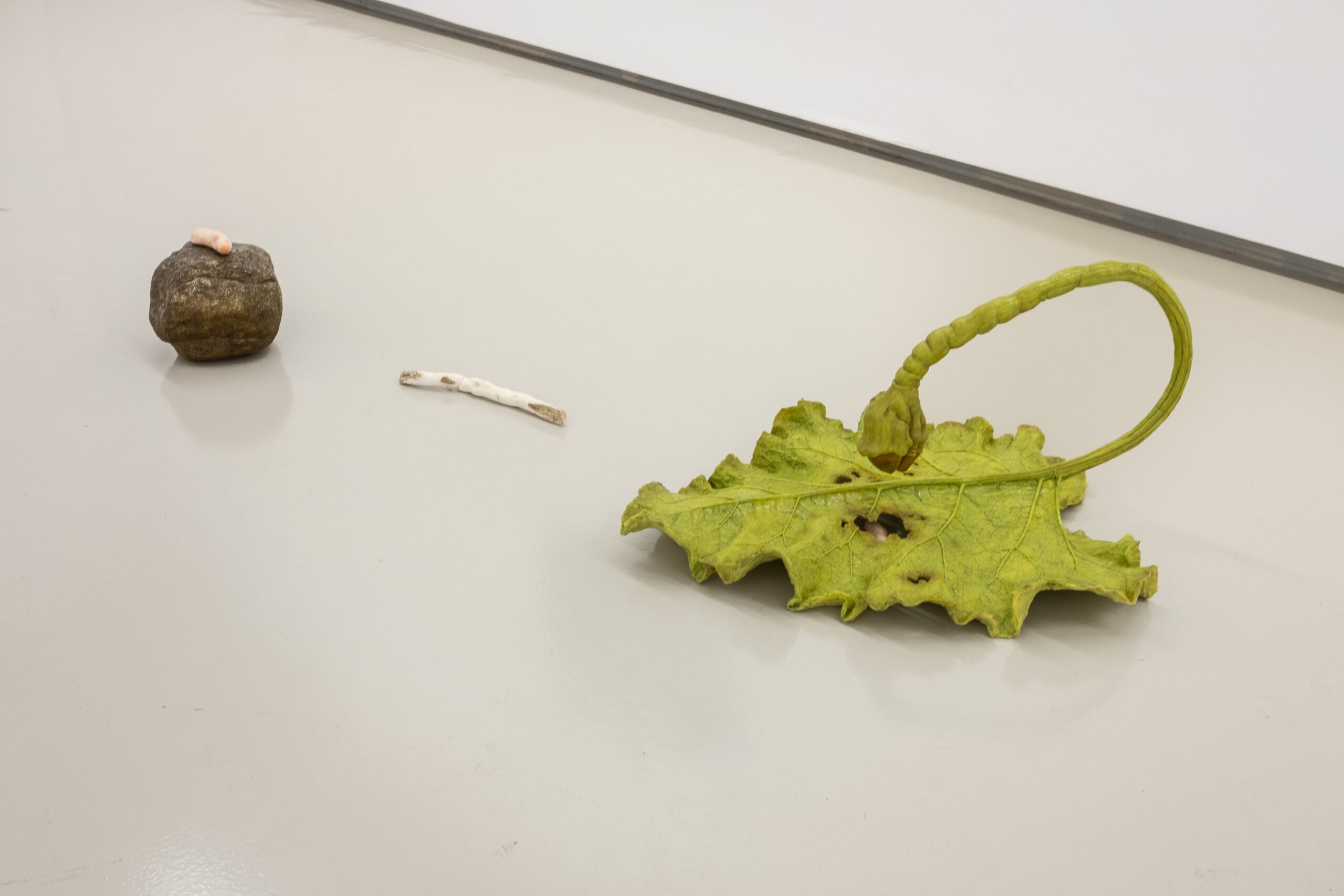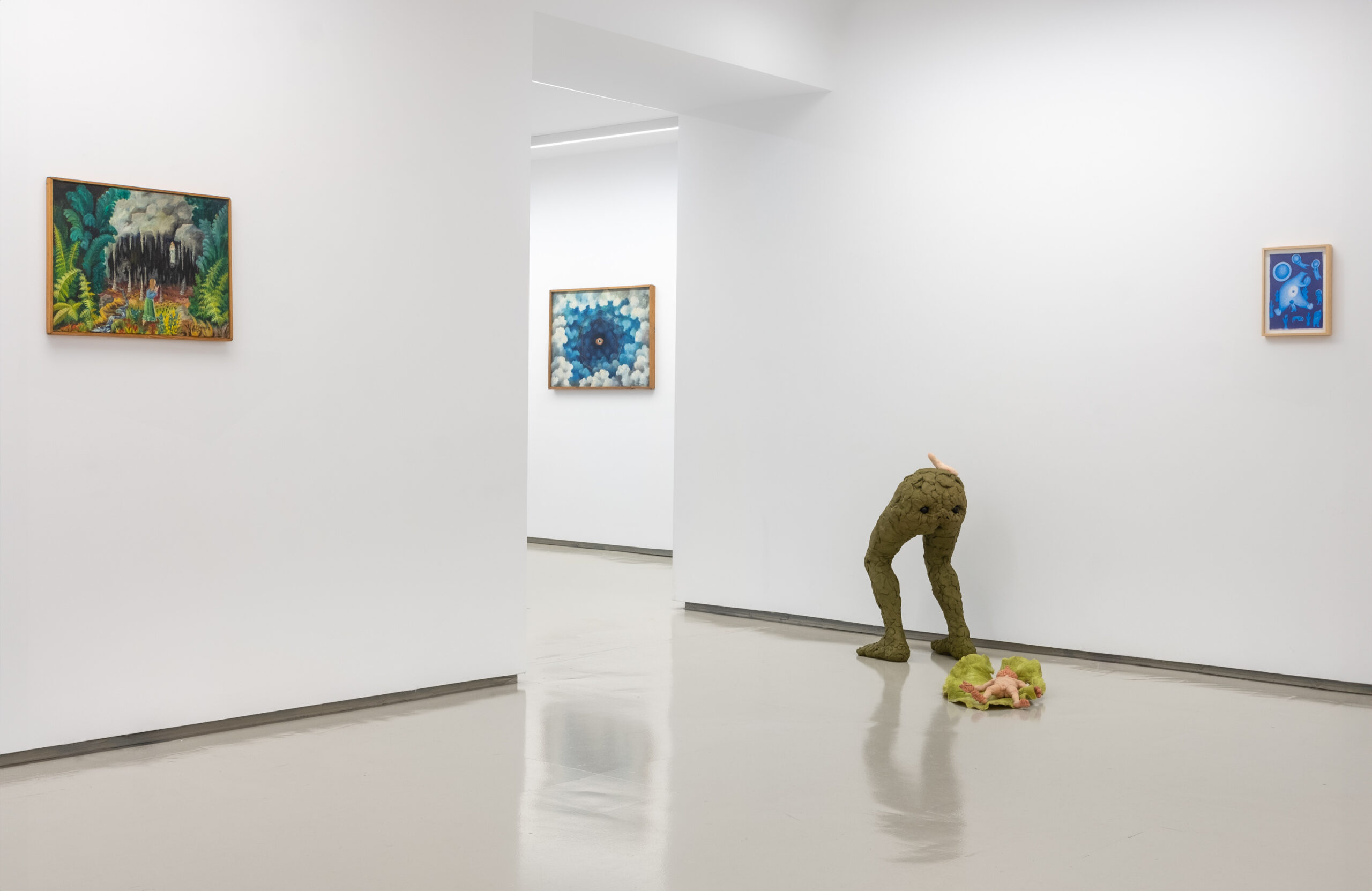Sun Came First
September 28 – November 25, 2023
Artists: Bartłomiej Hajduk, Tomasz Mróz, Teofil Ociepka
The sun came first, out of dust and gas, it emerged from the chaos. In our search for the primordial beginning, we direct our gaze at it, while the perpetual balancing between light and darkness frames the narrative of the exhibition. The starting point is the work of Teofil Ociepka, whose works are juxtaposed with those of contemporary artists: Bartłomiej Hajduk and Tomasz Mróz. Our route is marked by two intersecting paths: the former related to fantastic visions, which Ociepka owed to his study of occult texts, Polish folklore, folk tales and parables, and the latter connected with the moralising overtones of the artist’s work under the influence of the Catholic tradition and Polish legends.
The distinctive, unsophisticated style of Ociepka’s paintings has been shaped by a variety of sources and inspirations that provide an interpretative key to his work. The vast majority of them were texts. His private book collection consisted of several hundred items, among which were occult publications, alchemical manuals, astrological studies, Kabbalistic textbooks, numerous myths and legends of different cultures, and religious texts, mostly rooted in the Catholic tradition, but some also in pagan beliefs. Thanks to them, Ociepka built his fictional world, subsequently depicted in paintings.
The imaginary lands in Bartłomiej Hajduk’s works have a provenance partly similar to Ociepka’s fascination. Folklore, folk beliefs, and legends are his constant point of reference. Like the Silesian painter, Hajduk transforms the earthly order. Through the affirmation of fauna and flora, he undermines the vision of reality which places human at its centre. His drawings are populated by animals and plants frozen in movement or joyful dance, which are often protagonists of parables about transience and the beyond. Bartłomiej Hajduk also incorporates the thus understood infinite cycle of life into his work through the creation of objects and sculptures. During his walks along the riverbank, he collects animate and inanimate elements thrown out by the river and, like a magician, gives them another form and breathes new life into them.
The works of Tomasz Mróz, like those of Ociepka, can be seen as a kind of warning, although the tone of Mróz’s gestures is rather grotesque and ironic. In his works, the elements of contemporaneity are transformed in a way that shows their absurdity. The artist’s sculptures have their prototypes in the reality around us, but the figures created from polymorph and cast in silicone seem to be people who, pervaded with phobias, idolatry, and conspiracy theories, begin to turn into curiosities. The artist’s bestiary shown at the exhibition draws on selected works by Ociepka. For Mróz, human corporeality and physiology are as essential as the spiritual sphere. This may be the reason why his works entertain you, on the one hand, but on the other, fill you with fear through their connotations.
The duality of good and evil, night and day, testimony and fable, the mundane and the sacred have become the key to reading the artists’ works. The works are morality plays in their fantastic yet concrete nature. Recorded through martyrological biblical stories, yarns of storytellers or the astrophysical world, they contain a didactic element. The fictional world is governed by an unknown being, animals come out of the woods and from under the ground, monsters emerge from the water, there are planets, and the rules governing this imaginary place are as strict as those of the biblical stories, and, like them, give the viewer a severe reprimand.
Skills or education do not play a role in the world of dogma. The concurrence of non- professional art with contemporary art stops being a kind of faux pas; after all, Bartłomiej Hajduk and Tomasz Mróz’s works oscillate around forms found in Ociepka’s paintings as well as in vernacular art. The multilayered dialogue between the artists also marks the beginning of a reflection on a topic that is still relevant today – the place of amateur artists in the history of art and, consequently, their influence on the work of later generations.
Franciszek Smoręda, Lila Wiśniewska
Bartłomiej Hajduk (b. 1990) – a visual artist working in sculpture, drawing, and painting. Graduate of the Slade School of Fine Art, London (MFA) and the Camberwell College of Arts, London (BFA). His interests include folk traditions and folklore. In his sculptural practice, Hajduk uses elements of nature found during mudlarking, that is, searching river silt to discover valuable or interesting objects. He lives and works in London.
Tomasz Mróz (b. 1979) – an artist who creates sculptures, installations, and drawings. Graduate of the Faculty of Graphic Arts at the Academy of Fine Arts, Poznań. One of the founders and members of the Penerstwo group. Creator of large-scale, multi-element installations comprising silicone sculptures, film projections, and sound elements. The artist’s works were presented, among others, at exhibitions at the Centre for Contemporary Art, Warsaw; Zachęta – National Gallery of Art, Warsaw; Xawery Dunikowski Museum of Sculpture at the Królikarnia Palace, Warsaw; Foksal Gallery, Warsaw; Galeria Labirynt, Lublin; Municipal Gallery Arsenal, Poznań; Gdańsk City Gallery; and the Arsenal Gallery, Białystok. He lives and works in Warsaw.
Teofil Ociepka (1891 – 1978) – a self-taught primitivist painter, began artistic activity in the late 1920s in connection with his involvement in the occult movement. His work did not meet with approval, which made him abandon painting. Ociepka did not return to it until after the Second World War when Party circles developed an interest in Silesian non-professional painters. In 1946, in Janów, with the support of the local authorities, he and other artists established an art group, which evolved into the leading Polish group of amateur painters in subsequent years – the Janowska Group. Izabela Stachowicz helped to promote his output and organised Ociepka’s first solo exhibition in Warsaw as early as 1948. In 1959, Ociepka left Silesia and moved to Bydgoszcz. In the following years, encouraged by his wife Julia, he focused on strengthening his position as an independent artist as well as honing his painting skills. The 1960s and 1970s were the most prolific, as well as the most widely recognised, period of Ociepka’s work.
